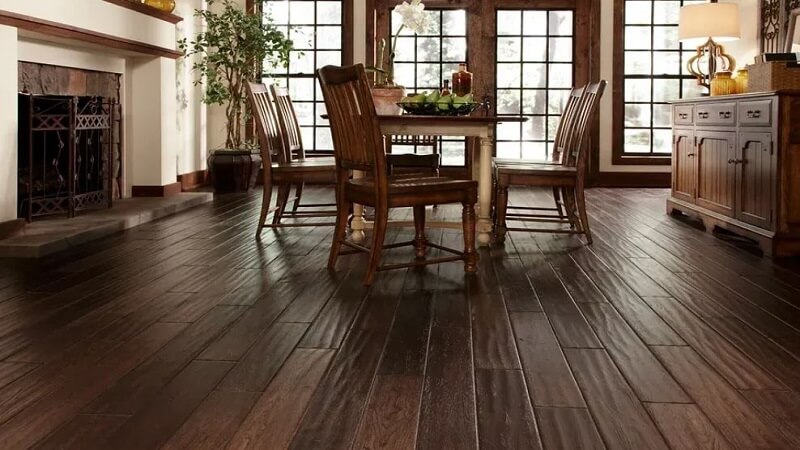Wooden floors are one of the most beautiful and timeless choices for both residential and commercial spaces. They add a natural warmth and elegance that complements almost any interior. However, like all flooring, wooden floors can suffer from damage over time. From scratches and dents to water damage and general wear, the question arises: Should you repair your wooden floors or replace them entirely?
This is a common dilemma many homeowners face when their wooden floors start to show signs of aging. While both options have their merits, choosing between wood floor repairs and replacement depends on several factors, such as the extent of the damage, the cost, and how much you value your floor’s overall aesthetic and functionality. In this article, we will explore both options to help you decide which is the best choice for your home.
Why Wooden Floors Are Worth Investing In
Before diving into the details of repairs versus replacement, it’s important to understand why wooden floors are such a valuable investment for your home. Wooden floors are durable, timeless, and can last for decades when properly maintained. Their aesthetic appeal can increase the value of your property, making them an attractive option for homebuyers. Moreover, wood has a natural ability to adapt to changing trends, making it a versatile choice that complements any design style.
However, as with any material, wooden floors do experience wear and tear over time. The good news is that with the right care and maintenance, wood floors can be repaired and restored to their former glory. Whether it’s scratches, warping, or other forms of damage, wood floor repairs are often the first line of defense.
When Should You Consider Wood Floor Repairs?
Wood floor repairs are ideal for situations where the damage is isolated or manageable. If your wooden floors have minor damage, such as scratches, small dents, or discoloration, repairing them can restore their appearance without the need for a complete overhaul.
1. Scratches and Surface Damage
Over time, even the most durable wooden floors can accumulate scratches from pets, furniture, or high heels. These superficial damages are often easy to repair with minimal effort. A quick wood floor repair can involve sanding down the affected area and refinishing it to match the surrounding wood, giving it a seamless appearance once again.
2. Water Damage (Minimal to Moderate)
While water damage can certainly be problematic for wooden floors, it’s not always a death sentence for your flooring. In cases where water has only slightly penetrated the surface and caused minor swelling or warping, wood floor repairs can often fix the issue. Professionals can replace or repair individual planks, sand down the affected area, and reapply a protective finish to restore the floor’s integrity.
3. Dents and Minor Structural Issues
Dents caused by heavy furniture or dropped items are a common problem for wooden floors. These types of issues can often be repaired by filling the dent with wood filler and sanding it smooth. In cases where the structural integrity of the floor has been compromised (such as loose planks), professionals can secure or replace the damaged boards, leaving the floor looking as good as new.
4. Cost-Effectiveness
One of the major advantages of wood floor repairs is the cost. Repairing wooden floors is often much more affordable than replacement. If the damage is relatively minor and localized, repairing the floor can save you money while still achieving a high-quality result.
For instance, if you’re located in London and need assistance, wood floor repairs London can often be done for a fraction of the cost of installing new floors, which includes removing old flooring, buying new materials, and installation fees.
When Should You Consider Replacing Your Wood Floors?
While repairs are a great option for many wood floor problems, there are situations where replacement is the best choice. In cases where the damage is extensive or the floor has reached the end of its life, replacement may be necessary.
1. Severe Water Damage
Water damage is one of the most common issues that can severely affect wooden floors. If the damage is extensive, such as when water has soaked through multiple planks or caused the wood to rot, repairs might not be enough. In these cases, replacing the damaged sections or the entire floor may be the only option. Water can also lead to mold or mildew growth, which requires complete replacement to ensure that your home is safe and healthy.
2. Widespread Wear and Tear
Over time, high-traffic areas of your wood floors will inevitably show signs of wear. While sanding and refinishing can help, if the floor has been worn down too much or the wood has become thin or damaged beyond repair, replacement might be the best option. If the boards are too thin, sanding may not be enough to restore the floor.
3. Extensive Scratches or Stains
If your floor is covered with deep scratches, gouges, or stains that cannot be repaired, it may be time to replace it. While light scratches can be fixed with a simple repair, deep gouges or stains that have penetrated the wood might be too much to restore, especially if they are spread across large areas of the floor.
4. Structural Issues or Buckling
If your wooden floors are buckling or have significant structural issues (such as large gaps between planks), repairs might not be sufficient to restore them. In this case, replacement may be the best option to ensure your floors are stable and safe to walk on.
5. Cost Considerations for Large-Scale Damage
While replacing your floor may initially seem more expensive than repairing it, sometimes replacing your entire floor can be a cost-effective option if the damage is widespread. For example, if the floor is old and worn out with multiple issues across the entire surface, replacing it might save you money in the long run compared to making repeated repairs.
Benefits of Professional Wood Floor Repairs vs. DIY
While some homeowners may be tempted to take the DIY route when it comes to wood floor repairs, it’s important to consider the benefits of professional help. Professionals bring a wealth of experience, the right tools, and knowledge of the best repair techniques to restore your floors effectively.
Some of the benefits of professional wood floor repairs include:
- Expertise and Experience: Professional repair services can tackle even the most complex damage, from deep scratches to structural issues.
- Quality Work: Professionals use high-quality materials and advanced equipment to ensure that the repairs are done properly and last for years.
- Time-Saving: Repairing wood floors takes time and effort. Professionals can complete the job efficiently, ensuring your floors are ready to use quickly.
- Long-Term Results: A professional repair job ensures that the floor will be restored to its original beauty and durability, prolonging its lifespan.
Conclusion: Wood Floor Repairs vs. Replacement
When it comes to deciding between wood floor repairs and replacement, the choice depends on the extent of the damage, your budget, and your long-term goals for the floor. Minor scratches, dents, and water damage can often be repaired, saving you money while restoring the floor’s appearance. On the other hand, extensive water damage, buckling, or significant wear and tear may require replacing the entire floor to ensure the integrity of your space.
In any case, it’s essential to assess the damage carefully and consider whether professional wood floor repairs can restore your floor or whether replacement is necessary. If you’re located in London and need expert help, wood floor repairs London are available to bring your floors back to life with top-quality service.
By making the right decision and investing in the right repair or replacement, you can ensure that your wooden floors continue to enhance the beauty and value of your home for many years to come.

